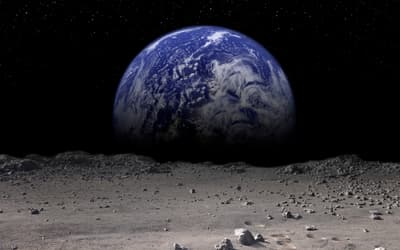
A Deeper Discussion of the Factors That Affect the Earth’s Rotation and Clarifying Its Role in the Tidal Evolution of the Earth-Moon System
Dr. Danny R. Faulkner • Sept. 17, 2025
There are far more factors than tidal braking involved in the earth’s changing rotation period. In this paper, I show that the picture is far more complicated than many recent creationists realize.

Sizes of Galaxies in JWST Data and Cosmology—Reply to Barnes
Dr. Jason Lisle • Aug. 20, 2025
The Doppler model is currently the only cosmological model that is consistent with both angular size and luminosity data from JWST observations, and it alone passes the Tolman test.

Size of Galaxies in JWST Data and Cosmology— Reply to Lisle
Luke A. Barnes • Dec. 18, 2024
Luke Barnes critiques Jason Lisle’s “Doppler Model” of 2024.
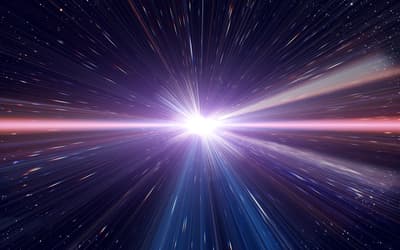
A Refutation of Lisle’s “Refutation” of Dennis (2024)
Dr. Phillip W. Dennis • Nov. 20, 2024
Dr. Dennis responds to Dr. Lisle’s arguments on the speed of light, suggesting a different interpretation of relativity.

Sizes of Galaxies in JWST Data Suggest New Cosmology
Dr. Jason Lisle • July 24, 2024
New data is consistent with biblical creation, not the big bang.

An Internal Contradiction of Lisle’s Anisotropic Synchrony Convention (ASC) Model
Dr. Phillip W. Dennis • July 10, 2024
Dr. Dennis discusses Dr. Lisle’s anisotropic synchrony convention in regards to the light travel time problem.

Thermodynamics and its Relation to Creation/Evolution: An Introduction
Dr. Danny R. Faulkner • March 6, 2024
Creationists have often used the 2nd law of thermodynamics to criticize naturalistic origins, but they have not always properly treated the subject.

Mach’s Principle in General Relativity and Reduced Light Travel Times in Cavitated Cosmologies
Dr. Phillip W. Dennis • Oct. 26, 2022
We explore the effect of cosmic voids on the light-travel-time-problem (LTTP) in a young age creationist (YAC) cosmology.
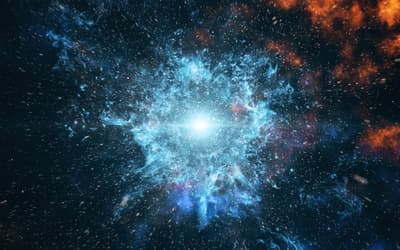
A Review of Stellar Formation Theory
Dr. Danny R. Faulkner • Sept. 29, 2021
Here I review some of the naturalistic theories of how stars form. I discuss many topics never described in the creation literature before.

The Role of the Burbidges in Opposing the Acceptance of Dark Matter: A Cautionary Tale
Dr. Danny R. Faulkner • Feb. 3, 2021
Geoffrey and Margaret Burbidge played a key role in slowing the acceptance of dark matter. Therein lies a cautionary tale for scientists.

Inerrancy and Biblical Authority: How and Why Old-Earth Inerrantists Are Unintentionally Undermining Inerrancy
Dr. Terry Mortenson • Sept. 16, 2020
The old-earth signers of the CSBInerrancy unintentionally violated their own principles of interpretation and unintentionally undermined the inerrancy and the authority of Scripture.
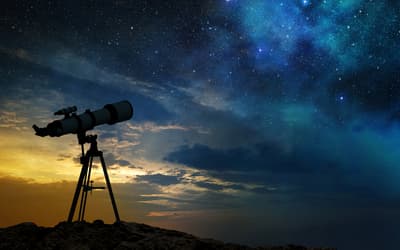
An Evaluation of Astronomical Young-Age Determination Methods 2: Solar, Stellar, Galactic, and Extragalactic
Dr. Danny R. Faulkner • Oct. 30, 2019
Dr. Danny Faulkner evaluates 23 arguments for recent origin for the sun, stars, and galaxies.

An Evaluation of Astronomical Young-Age Determination Methods I: The Solar System
Dr. Danny R. Faulkner • Sept. 25, 2019
Evaluating 25 astronomical arguments for recent origin for the solar system found some to be wanting and others appear to be sound.

Misquoting Hubble
Dr. Danny R. Faulkner • Sept. 26, 2018
Creationists frequently quote Hubble to the effect that he inserted the cosmological principle to avoid stark realties about the universe that his data implied.

A Test for Quasar Cosmological Redshifts
Dr. Danny R. Faulkner • March 21, 2018
The hypothesis that extragalactic redshifts are cosmological is strongly supported. I encourage fellow recent creationists to abandon their doubts that extragalactic redshifts are cosmological.

The Case for Cosmological Redshifts
Dr. Danny R. Faulkner • March 14, 2018
Many recent creationists appear to oppose the Hubble relation, the expansion of the universe, and/or cosmological redshifts of quasars.

Are Old Supernova Remnants Really Missing? Re-Evaluating a Well-Known Young-Universe Argument
Dr. Danny R. Faulkner • Oct. 25, 2017
There are old supernova remnants and stage three supernova remnants have been identified. Therefore, this may not be a good argument for recent origin.

The Case for Dark Matter
Dr. Danny R. Faulkner • March 22, 2017
We ought not to dismiss the observational science for dark matter over fears of the misuse of dark matter in historical science.

Revisiting an Iconic Argument for Milankovitch Climate Forcing: Should the “Pacemaker of the Ice Ages” Paper Be Retracted? Part 3
Dr. Jake Hebert • Sept. 14, 2016
Despite its popularity, the Milankovitch hypothesis has many problems that are acknowledged even by secular scientists (Cronin 2010, 130–139).

Revisiting an Iconic Argument for Milankovitch Climate Forcing: Should the “Pacemaker of the Ice Ages” Paper Be Retracted? Part 2
Dr. Jake Hebert • May 25, 2016
Part I of this series presented a number of serious problems with the Pacemaker paper. It is necessary to also understand the Blackman-Tukey (B-T) method.

New Method to Assess the Luminosity Function of Galaxies
Dr. Jason Lisle • March 30, 2016
We find that small variations in galaxy density as a function of redshift do exist, and are not due to the Malmquist bias.

Thoughts on the rāqîa‘ and a Possible Explanation for the Cosmic Microwave Background
Dr. Danny R. Faulkner • March 23, 2016
Dr. Danny Faulkner proposes that Genesis 1:1 is an introductory encapsulation that establishes a foundation for building a biblical model of astronomy.

Revisiting an Iconic Argument for Milankovitch Climate Forcing: Should the “Pacemaker of the Ice Ages” Paper Be Retracted? Part 1
Dr. Jake Hebert • March 9, 2016
This paper, the first in a series, demonstrates that much of the Hays et al. paper, as originally presented, is invalid.

Radioisotope Dating of Meteorites: V. Isochron Ages of Groups of Meteorites
Dr. Andrew A. Snelling • Dec. 16, 2015
This contribution is designed to document the radioisotope dating data for groups of chondrites, stony achondrites, pallasites and mesosiderites, and irons.

Radioisotope Dating of Meteorites: IV. The Primitive and Other Achondrites
Dr. Andrew A. Snelling • May 6, 2015
This paper documents radioisotope dating for meteorites, achondrites, angrites, aubrites, mesosiderites, and irons to further discuss significance of the data.

The Blurring Distinction between Asteroids and Comets
Dr. Danny R. Faulkner • April 29, 2015
Whether there is a continuum on which our older conception of asteroids and comets are extremes or if there still is a gap between them is not entirely clear.

Can One Astronomically Date the Flood within the Hydroplate Model?
Dr. Danny R. Faulkner • April 1, 2015
Dr. Danny Faulkner analyzes Dr. Walt Brown’s determination of the date of the Flood within his hydroplate model using the orbits of two comets.

Speculation on Redshift in a Created Universe1
Dr. John G. Hartnett • Feb. 11, 2015
Dr. Hartnett speculates about the idea that what we observe in the universe is not in equilibrium; that is, the state of the universe is in a transient state.

A Biblical Creationist Cosmogony
Dr. John G. Hartnett • Jan. 14, 2015
The cosmogony proposed is consistent with all creationist understandings of the biblical texts and has no light-travel time problem.

Critique: Faulkner’s Miraculous Translation of Light Model Would Leave Evidence
Dr. John G. Hartnett • Nov. 19, 2014
In 2013 D. R. Faulkner proposed what he says is a new solution to the biblical creationist starlight travel-time problem.

Response to: “Critique: Faulkner’s Miraculous Translation of Light Model Would Leave Evidence”
Dr. Danny R. Faulkner • Nov. 19, 2014
I am delighted that my friend, John Hartnett, has responded with some objections to my proposal for a new solution to the light travel time problem.

Expansion of Space—A Dark Science
Dr. John G. Hartnett • Nov. 13, 2014
I contend that expansion of space is of itself not tenable as a mechanism for the expansion of the universe.

A Missing Neutrino—Dark Radiation
Dr. John G. Hartnett • Sept. 24, 2014
From various problems in cosmology a need has developed to postulate the existence of unknown types of energy and matter from the dark side.

Evaluating The Day Four Cratering Hypothesis
Wayne Spencer • Sept. 10, 2014
Creationists have recently considered impact cratering in the solar system occurring during the fourth day of the Creation Week.

Anomalies with Planets and Satellites in the Solar System—Indication of Design?
Dr. Danny R. Faulkner • June 25, 2014
The evolutionary theory cannot explain certain aspects of solar system bodies. There have been few comprehensive proposals for a creationary model.

A Photon Reference Frame and Distant Starlight: Analyzing Ideas from Gerald L. Schroeder’s The Science of God
Andrew Sibley • May 14, 2014
This paper reviews claims made by Gerald L. Schroeder in relation to the nature of light and the age of the universe.

A Discussion of Stellar Nucleosynthesis
Dr. Danny R. Faulkner • April 30, 2014
Astronomers have developed an elaborate, physically robust evolutionary theory to explain the abundances that we see throughout the universe. While this theory may be explanatory, it has no predictive
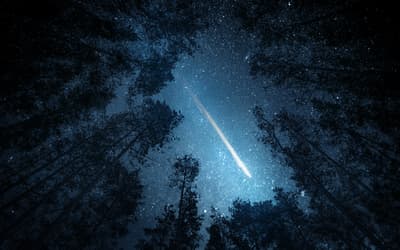
Radioisotope Dating of Meteorites: I. The Allende CV3 Carbonaceous Chondrite
Dr. Andrew A. Snelling • April 16, 2014
Meteorites have been used to date the earth with a 4.55 ± 0.07 Ga Pb-Pb isochron called the geochron.

Comments on the Cosmic Microwave Background
Dr. Danny R. Faulkner • March 19, 2014
The big bang model is contrary to the Bible and the recent creation model. Since in our view the big bang never happened, the CMB requires some alternate explanation.
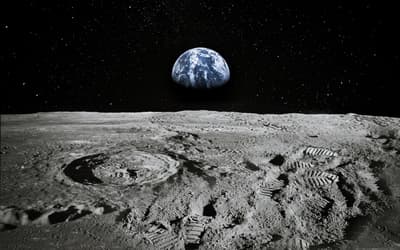
Interpreting Craters in Terms of the Day Four Cratering Hypothesis
Dr. Danny R. Faulkner • Jan. 22, 2014
In recent years there has been increasing discussion of craters within the creation paradigm.

The Second Law of Thermodynamics and the Curse
Dr. Danny R. Faulkner • Nov. 13, 2013
Many recent creationists believe that the second law of thermodynamics came into being as a result of the Fall or the curse. I argue that this is not supported by Scripture nor science.

An Evaluation of Plasma Astronomy
Dr. Danny R. Faulkner • Sept. 4, 2013
Dr. Faulkner examines the claims of one proponent of plasma astronomy, Donald Scott.
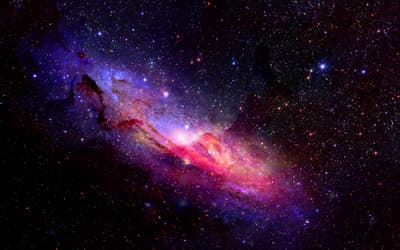
Astronomical Distance Determination Methods and the Light Travel Time Problem
Dr. Danny R. Faulkner • June 12, 2013
Some recent creationists have attempted to address the light travel time problem indirectly with an implied appeal to a small universe.

Beyond Distant Starlight: Next Steps For Creationist Cosmology
James Upton • Jan. 26, 2011
On both large and small cosmic scales there is a diverse range of trends, patterns, and phenomena that beckon some kind of explanation.

Anisotropic Synchrony Convention—A Solution to the Distant Starlight Problem
Dr. Jason Lisle • Sept. 22, 2010
Clear biblical teaching is that the universe is only a few thousand years old, so we should only be able to see objects within a radius of 6,000 light years.

A Brief History of Intolerance in Modern Cosmology
Dr. Jerry Bergman • Jan. 21, 2009
A review of some recent well-documented cases of intolerance in the cosmology field illustrates a common problem in science. Many relate to the Big Bang theory.

Mars, a Testament to Catastrophe
Charles Creager, Jr. • July 23, 2008
The unlikely geographic relationship between these gigantic features suggests a cause and effect relationship between them. This implies a global Martian catastrophe comparable to the Genesis Flood.

An Apology and Unification Theory for the Reconciliation of Physical Matter and Metaphysical Cognizance
Desmond Allen • Feb. 27, 2008
Because one is tangible and the other intangible, the physical and metaphysical are generally treated separately. But this dichotomy is illogical.
